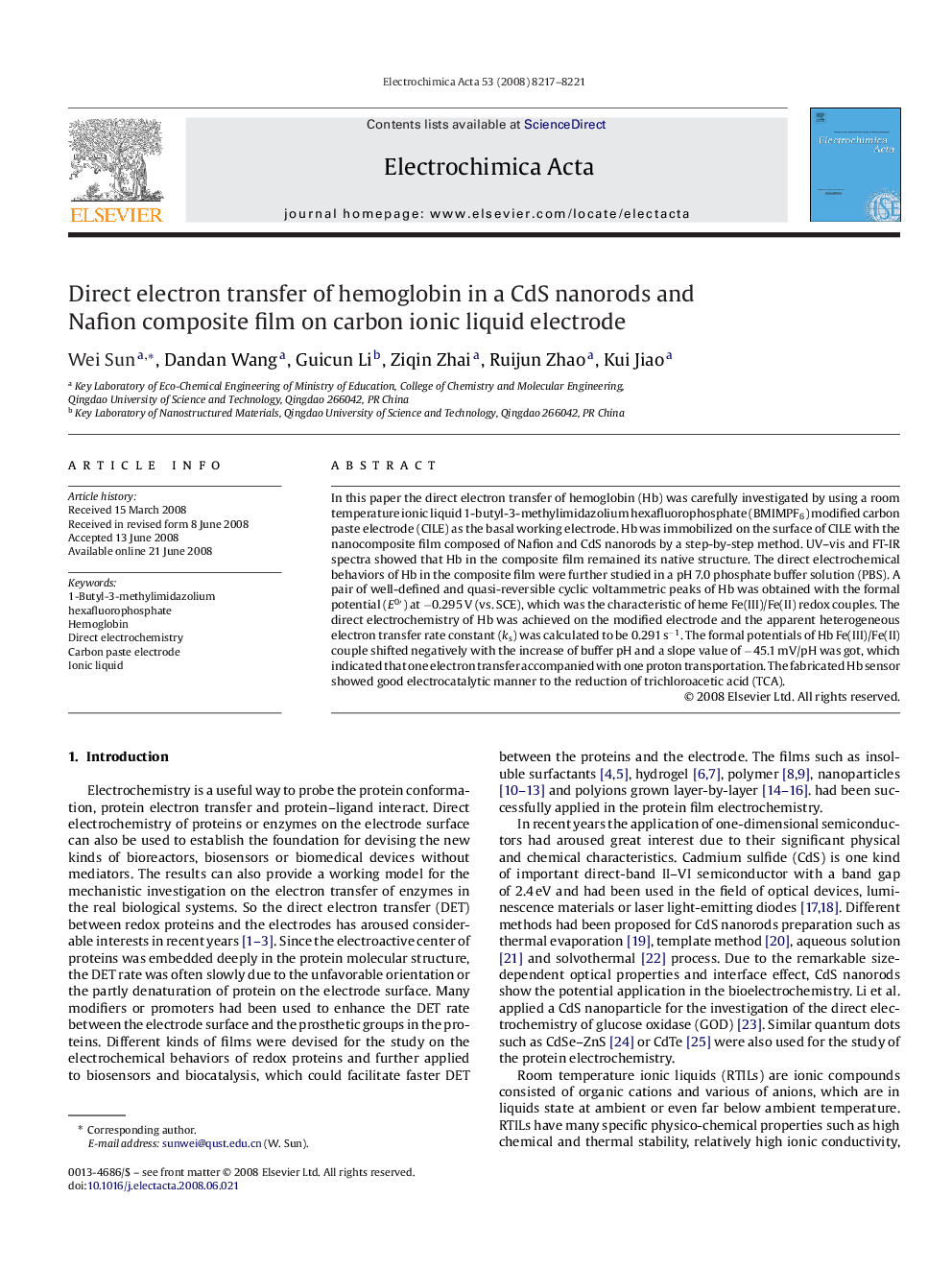| Article ID | Journal | Published Year | Pages | File Type |
|---|---|---|---|---|
| 194393 | Electrochimica Acta | 2008 | 5 Pages |
In this paper the direct electron transfer of hemoglobin (Hb) was carefully investigated by using a room temperature ionic liquid 1-butyl-3-methylimidazolium hexafluorophosphate (BMIMPF6) modified carbon paste electrode (CILE) as the basal working electrode. Hb was immobilized on the surface of CILE with the nanocomposite film composed of Nafion and CdS nanorods by a step-by-step method. UV–vis and FT-IR spectra showed that Hb in the composite film remained its native structure. The direct electrochemical behaviors of Hb in the composite film were further studied in a pH 7.0 phosphate buffer solution (PBS). A pair of well-defined and quasi-reversible cyclic voltammetric peaks of Hb was obtained with the formal potential (E0′) at −0.295 V (vs. SCE), which was the characteristic of heme Fe(III)/Fe(II) redox couples. The direct electrochemistry of Hb was achieved on the modified electrode and the apparent heterogeneous electron transfer rate constant (ks) was calculated to be 0.291 s−1. The formal potentials of Hb Fe(III)/Fe(II) couple shifted negatively with the increase of buffer pH and a slope value of −45.1 mV/pH was got, which indicated that one electron transfer accompanied with one proton transportation. The fabricated Hb sensor showed good electrocatalytic manner to the reduction of trichloroacetic acid (TCA).
